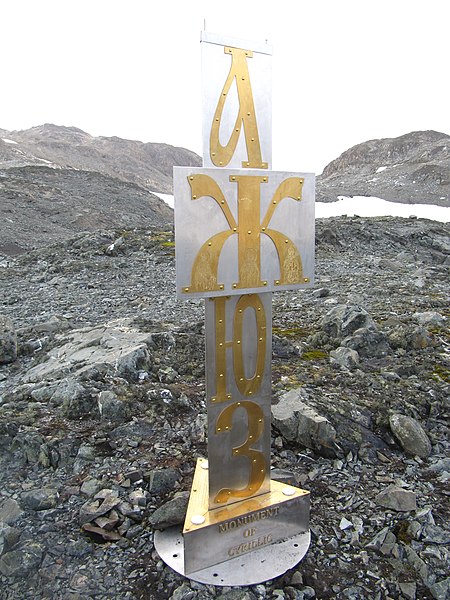Ukrainian Ye or Round Ye is a character of the Cyrillic script. It is a separate letter in the Ukrainian alphabet, the Pannonian Rusyn alphabet, and both the Carpathian Rusyn alphabets; in all of these, it comes directly after Е. In modern Church Slavonic, it is considered a variant form of Ye (Е е). Until the mid-19th century, Є/є was also used in Romanian and Serbian. Other modern Slavonic languages may use Є/є shapes instead of Е/е for decorative purposes. Then, the letter is usually referred to by the older name Yest. If the two need to be distinguished, the descriptive name Broad E is sometimes used. It can also be found in the writing of the Khanty language.
Serbian postage stamp from 1869, cancelled in Kragujevac, with є used to spell "је".
The Cyrillic script, Slavonic script or simply Slavic script is a writing system used for various languages across Eurasia. It is the designated national script in various Slavic, Turkic, Mongolic, Uralic, Caucasian and Iranic-speaking countries in Southeastern Europe, Eastern Europe, the Caucasus, Central Asia, North Asia, and East Asia, and used by many other minority languages.
Example of the Cyrillic script. Excerpt from the manuscript "Bdinski Zbornik". Written in 1360.
View of the cave monastery near the village of Krepcha, Opaka Municipality in Bulgaria. Here is found the oldest Cyrillic inscription, dated 921.
Cyrillic Script Monument in Antarctica near the Bulgarian base St. Kliment Ohridski




